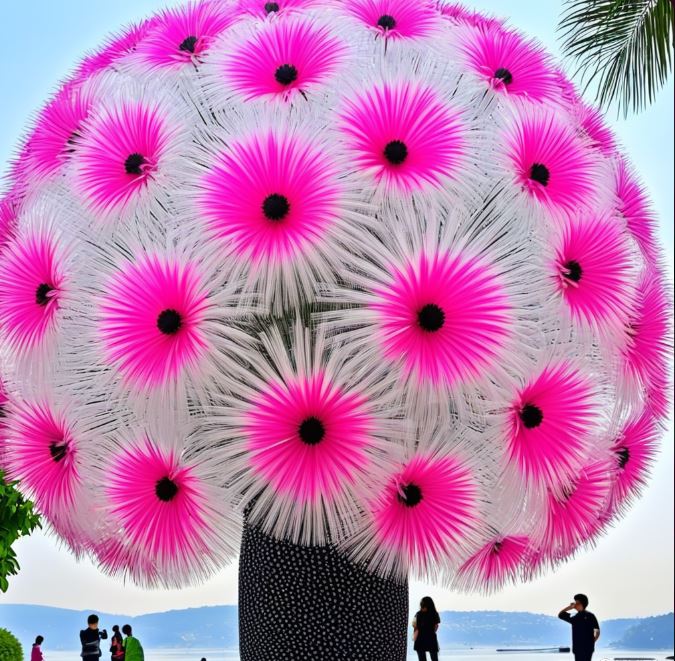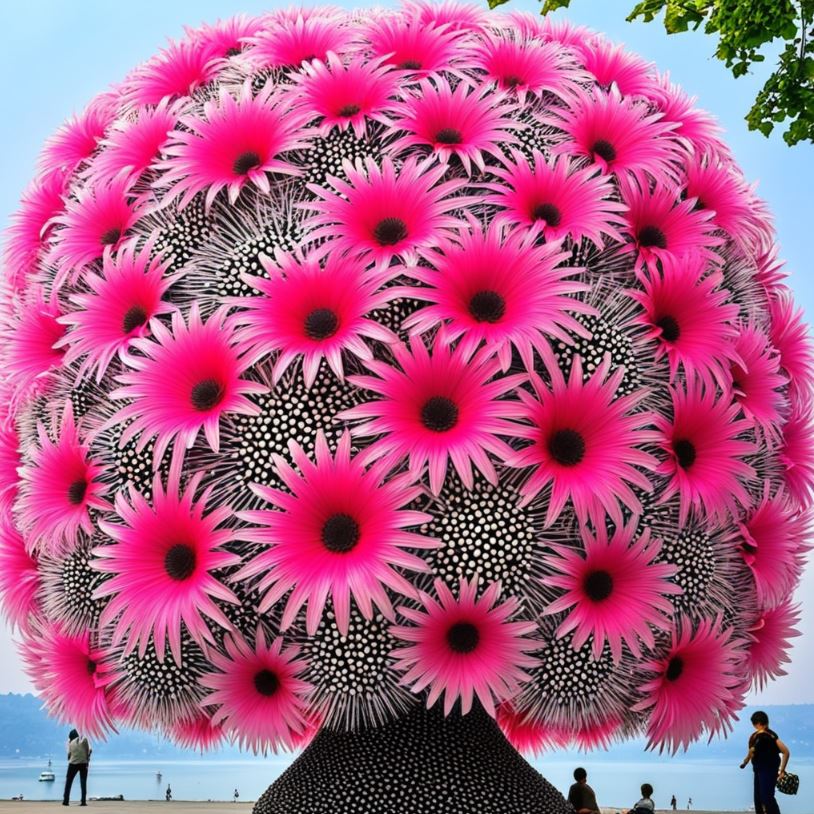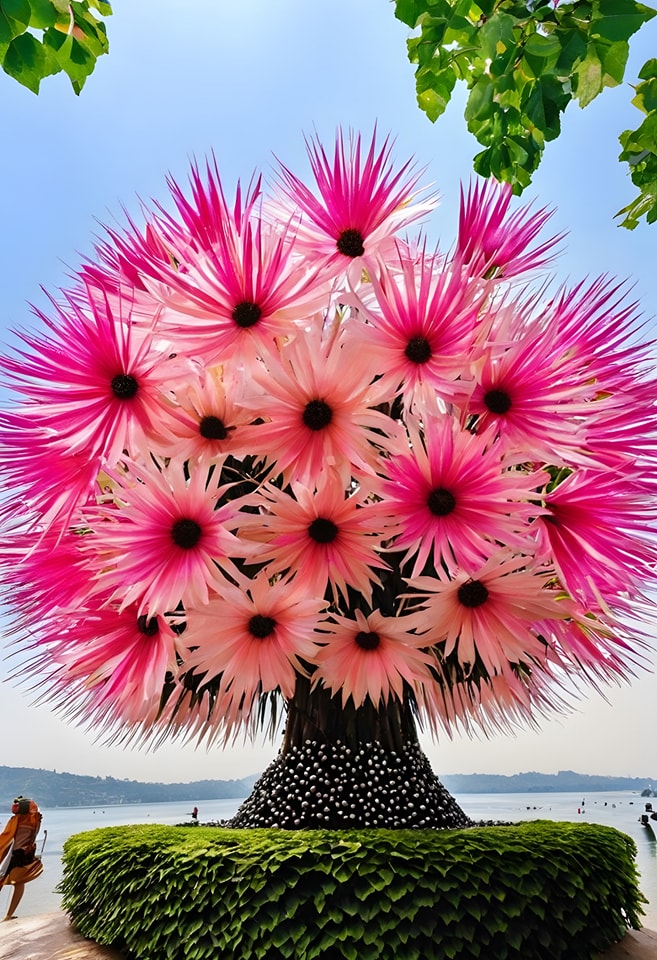The Dragon Tree Flower, scientifically known as Dracaena cinnabari, is undoubtedly a real and captivating plant that flourishes primarily in the unique ecosystem of the Socotra archipelago. This extraordinary tree has gained widespread recognition not only for its striking aesthetic—characterized by a characteristic umbrella-shaped crown—but also for its remarkable red sap, often referred to as dragon’s blood. The name itself evokes images steeped in legend and mystique, aligning it with the fire-breathing dragons of ancient lore. Beyond its mythical nomenclature, Dracaena cinnabari holds immense ecological significance; however, it finds itself on the endangered species list due to various pressures, including climate change and human activity, highlighting a poignant tension between nature’s wonders and human impact.

Myth Meets Nature: The Intersection of Legend and Reality
The relationship between the Dragon Tree Flower and mythology is deeply evocative. In many cultures, the color red implies life force, vitality, and even danger, thereby framing the tree in an almost mystical light. The exudates from this tree are reminiscent of blood, prompting ancients to attribute powerful properties to it, such as offering protection or healing. Importantly, this dynamic serves as a poignant reminder of how interconnected our perceptions of nature and mythology can be, exemplifying an enduring narrative where truths blend with tales. People often misinterpret such phenomena, blurring the lines between factual existence and imaginative creation.
The Mythical Symbolism of the Dragon Tree Flower
The Dragon Tree Flower has long been imbued with a sense of mythical significance, capturing the imagination of people across cultures.
- In ancient times, the vibrant red sap of the Dracaena cinnabari was believed to possess remarkable healing and protective properties. This “dragon’s blood” was highly prized and often used in various rituals and medicinal practices.
- The tree’s unique and striking appearance, with its umbrella-like canopy and twisted trunk, further contributed to its mythical aura. Many saw the tree as a living embodiment of the legendary dragon, with the sap representing the creature’s lifeblood.
- Legends and folktales often depicted the Dragon Tree Flower as a guardian of the mystical realms, with the trees themselves being imbued with a sense of sentience and even magical abilities.
- The very name “Dracaena cinnabari” evokes the imagery of fire-breathing dragons, further strengthening the connection between this remarkable plant and the fantastical creatures of myth and legend.

Blurring the Lines between Fact and Fiction
The allure and mythical associations surrounding the Dragon Tree Flower have often led to the blurring of the lines between its factual existence and imaginative interpretations.
- While the Dracaena cinnabari is a real and documented species, its striking appearance and unique characteristics have sometimes led to the tree being mistaken for a purely fictional or mythical entity.
- The vibrant red sap, often referred to as “dragon’s blood,” has fueled the notion that the tree is somehow connected to the legendary creatures of old, when in reality, the sap is a natural defense mechanism produced by the plant.
- Depictions of the Dragon Tree Flower in art, literature, and popular culture have frequently embellished or exaggerated its features, further reinforcing the perception of the tree as a fantastical entity rather than a real-world organism.
- This interplay between the tangible and the imagined has contributed to the enduring fascination with the Dragon Tree Flower, as it continues to captivate audiences with its blend of natural wonder and mythical allure.
Ecological Significance and Conservation Challenges
On another level, the endangered status of Dracaena cinnabari sparks critical discussions about conservation efforts. It poses an ethical question: how do we balance admiration for such rare species with responsible intervention to protect them? The dragon blood tree stands as a testament to the complexity of our environments, where every piece plays a role, and losing one could lead to unforeseen repercussions. Thus, while there may be a tendency to view the dragon tree through the lens of fantasy, its reality carries weighty implications for biodiversity and conservation strategy.
The Endangered Status of the Dragon Tree Flower

The Dragon Tree Flower, or Dracaena cinnabari, is currently considered an endangered species, facing various threats to its survival.
- Climate change and desertification have had a significant impact on the Socotra archipelago, the primary habitat of the Dragon Tree Flower. These environmental changes have made it increasingly difficult for the trees to thrive and reproduce.
- Human activity, such as unsustainable harvesting of the trees for their valuable sap and wood, as well as the introduction of invasive species, have further contributed to the decline of the Dracaena cinnabari population.
- Conservation efforts, while ongoing, have faced numerous challenges in protecting the Dragon Tree Flower. The remoteness and inaccessibility of its natural habitat, coupled with limited resources and funding, have made it difficult to implement effective preservation strategies.
- The endangered status of the Dragon Tree Flower highlights the fragility of our planet’s ecosystems and the pressing need for robust conservation measures to safeguard the world’s biodiversity.
Balancing Admiration and Conservation
The plight of the Dragon Tree Flower presents a complex ethical dilemma, as we strive to balance our admiration for this remarkable plant with the need for responsible conservation efforts.
- On one hand, the Dragon Tree Flower’s unique beauty, mythical associations, and ecological significance have captivated people worldwide, fueling a genuine desire to protect and preserve it.
- However, the pressures facing the Dracaena cinnabari, from climate change to human exploitation, have pushed the species to the brink of extinction, underscoring the urgent need for intervention.
- Striking a balance between appreciating the Dragon Tree Flower’s wonders and implementing effective conservation strategies is crucial. This may involve a multifaceted approach, including habitat restoration, sustainable resource management, and public education campaigns.
- Ultimately, the fate of the Dragon Tree Flower serves as a poignant reminder of the delicate balance between human activity and the natural world, challenging us to consider our role as stewards of the planet’s biodiversity.
Cultural Perspectives and the Collective Consciousness
Interestingly, the allure surrounding Dracaena cinnabari has not only ecological ramifications but cultural ones as well. Social media platforms like Reddit have become hubs for sharing both appreciation and information about this extraordinary tree, making the subject resonate with audiences beyond scientific circles. The enthusiasm seen in conversations about the tree amplifies its importance within modern-day culture, enabling a collective consciousness that recognizes its value and advocates for its preservation. Moreover, as we cultivate an awareness regarding the significance of biodiversity, species like the dragon blood tree elevate our understanding of what it means to protect our planet. Drawing parallels to more familiar plants, consider the way saving one tree might lead us into broader conversations around habitat loss, climate actions, or the concept of extinction. Suddenly, this ‘real’ tree becomes a metaphor for larger environmental dialogues, urging humanity to consider its legacy carefully.
The Dragon Tree Flower’s Online Presence and Cultural Resonance
The Dragon Tree Flower (Dracaena cinnabari) has found a significant online following, with platforms like Reddit serving as hubs for the discussion and appreciation of this remarkable plant.
- Social media platforms have enabled the dissemination of information and visuals about the Dragon Tree Flower, captivating audiences beyond the scientific community and fostering a collective consciousness about its significance.
- The enthusiasm and curiosity expressed in online conversations about the Dracaena cinnabari highlight the tree’s cultural resonance, as people from diverse backgrounds engage with its unique attributes and mythical associations.
- This online presence has amplified the Dragon Tree Flower’s importance within modern-day culture, with the tree becoming a symbol that transcends its botanical classification and sparks broader discussions about the natural world.
- The ability of the Dragon Tree Flower to capture the public’s imagination, both online and offline, underscores its potential to serve as a gateway into larger environmental dialogues, catalyzing discussions about biodiversity, conservation, and humanity’s relationship with the planet.
The Dragon Tree Flower as a Metaphor for Environmental Awareness
The Dragon Tree Flower, with its endangered status and captivating features, has the potential to serve as a powerful metaphor for environmental awareness and conservation efforts.
- As people develop a deeper appreciation for the Dracaena cinnabari and its precarious situation, the tree can become a touchstone for broader discussions about habitat loss, climate change, and the importance of protecting biodiversity.
- By drawing parallels between the plight of the Dragon Tree Flower and the challenges faced by other endangered species, the public can be inspired to consider their role in safeguarding the natural world and the interconnectedness of all living things.
- The tree’s unique characteristics, its cultural significance, and its fragile existence can be leveraged to raise awareness about the vital importance of conservation strategies and the need for sustainable practices that prioritize the health of the planet.
- In this way, the Dragon Tree Flower transcends its botanical classification and becomes a symbol that encourages a collective consciousness about our responsibility as stewards of the natural world, urging us to consider our legacy and the impact of our actions.
Conclusion: The Dragon Tree Flower (Dracaena cinnabari) – A Captivating Blend of Myth, Nature, and Conservation
In revisiting the question, it’s clear that the Dragon Tree Flower (Dracaena cinnabari) is far more than a mere figment of imagination; it’s a vital piece of our planet’s biological tapestry, rooted in both reality and myth. Its existence challenges us to look deeper into how nature and cultural narratives intertwine, crafting not just the story of a tree, but of ecology itself. The Dragon Tree Flower’s allure, its endangered status, and its ability to captivate audiences worldwide serve as a powerful reminder of the intricate balance between the natural world and human impact. As we continue to navigate the complexities of conservation and our relationship with the environment, the Dracaena cinnabari stands as a testament to the enduring wonder of the natural world, urging us to protect and preserve the Earth’s extraordinary biodiversity.




